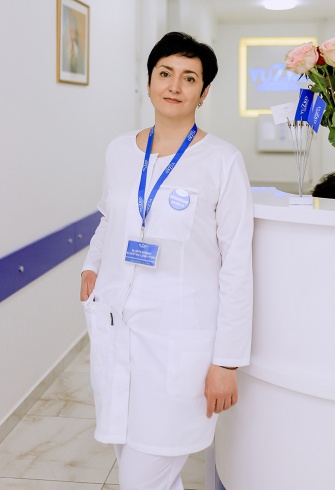Pre-implantation genetic diagnostics (PID) is a method by which embryos with chromosomal abnormalities are identified.
The frequency of pregnancy is equal to 30% in the natural cycle, in 70% - pregnancy does not occur. The main reason for this is chromosomal abnormalities, which are manifested as a result of not the onset of pregnancy, loss of pregnancy, impaired implantation, inability to fertilize.
Non-distinction of chromosomes in the process of maturation of germ cells is the most common cause of chromosomal pathologies. Moreover, 85% of cases of non-implantation of embryos are associated with abnormalities during oogenesis (egg maturation) and only in 15% of cases - with spermatogenesis. More rare causes of chromosomal anomalies of embryos are inheritance of the parent chromosomal pathology and disturbance in the process of division of a fertilized egg.
Genetic diagnostics prevents:
- the birth of a child with chromosomal diseases;
- termination of pregnancy;
- increases the incidence of pregnancy in the artificial insemination program. There are 2 main types of genetic pathology:
- chromosomal abnormalities;
- gene pathologies - mutations of individual genes.
Pre-implantation genetic diagnostics occurs in several stages:
- Fertilization program (in vitro fertilization).
- Embryo biopsy.
- Cryopreservation of the embryo.
- Laboratory diagnostics of biopsied cells.
- Defrosting a healthy embryo.
- Embryo transfer into uterine cavity.
New Generation Sequencing (NGS) is the newest method of full genome screening of embryos.
What are the indications for NGS?
Women after 35 years (the risk of having a baby with chromosomal abnormalities, primarily Down syndrome, increases with the age of the mother).
The usual miscarriage if the patient has a history of loss of pregnancy 3 or more times. Unsuccessful attempts at artificial insemination.
Patients who have a family history of inherited diseases that are passed on from generation to generation.
If during pathohistological examination a chromosomal abnormality is detected.
How is an embryo biopsy performed?
An embryo biopsy is required for pre-implantation genetic diagnosis. A biopsy is performed when the embryos reach the blastocyst stage (5-6 days after fertilization). At this stage, biopsy is the most effective and safe. Auxiliary hatching is performed a day before the biopsy. This requires that, at the time of the biopsy, several cells of the outer layer of blastocysts extend beyond the shell and are accessible for micromanipulation. The cells of the embryo itself remain intact, so the biopsy is completely safe for the unborn baby, as confirmed by numerous studies. Embryos after biopsy are vitrified, and the obtained biopsies are analyzed by NGS method.
Please contact:
Doctors, who take surgeries and can be addressed

Candidate of Medical Sciences, Associate Professor
more details
obstetrician-gynecologist
more details
obstetrician-gynecologist
more details
obstetrician-gynecologist
more details